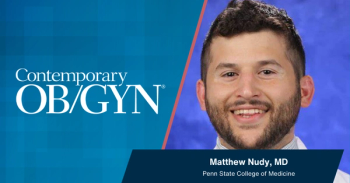
FDA approves companion diagnostic for adjuvant abemaciclib plus endocrine therapy in high-risk early breast cancer
The FDA has approved the Ki-67 IHC MIB-1 pharmDx test to assist in determining which patients with early breast cancer who are at high risk of disease recurrence might benefit from adjuvant treatment with abemaciclib plus endocrine therapy.
The FDA has approved the Ki-67 IHC MIB-1 pharmDx (Dako Omnis) test to assist in determining which patients with early breast cancer who are at high risk of disease recurrence might benefit from adjuvant treatment with abemaciclib (Verzenio) plus endocrine therapy.1
This is the first immunohistochemistry test measuring Ki-67 expression to receive regulatory approval in the context of treatment with abemaciclib, according to Agilent Technologies, Inc. The test was developed in collaboration with Eli Lilly and Company.
“Agilent’s Ki-67 IHC MIB-1 pharmDx (Dako Omnis) companion diagnostic assay for the Dako Omnis advanced staining platform has been designed and tested to aid in evaluating risk of recurrence in early breast cancer,” Sam Raha, president of the Diagnostics and Genomics Group at Agilent Technologies, Inc., stated in a press release. “Its approval establishes a clinically relevant standard for recurrence risk assessment in early breast cancer so that more high-risk patients who may experience clinical benefit from treatment with [abemaciclib] are identified.”
On October 12, 2021, the
The open-label, global, phase 3 monarchE trial (NCT03155997) enrolled patients who were at least 18 years of age and who had hormone receptor–positive, HER2-negative disease. Patients had to be considered to be high risk, which was defined as having 4 or more positive pathologic axillary lymph nodes or 1 to 3 positive axillary lymph nodes and at least 1 of the following: a tumor size of 5 cm or bigger, histologic grade 3 disease, or a centrally-assessed Ki-67 score of 20% or higher.3
Patients were allowed to have received up to 12 weeks of endocrine therapy prior to randomization. Radiotherapy, as well as adjuvant and neoadjuvant chemotherapy, were permitted. If patients had occult breast cancer, metastatic disease, or node-negative disease, they were excluded. Following a protocol amendment, patients with inflammatory disease were also excluded.
Other exclusion criteria included having received treatment with endocrine therapy for breast cancer prevention, raloxifene (Evista) and/or a CDK4/6 inhibitor, and a history of venous thromboembolic events.
A total of 5,637 patients were enrolled to the trial, and they were randomized 1:1 to receive either abemaciclib plus endocrine therapy (n = 2,794) or endocrine therapy alone (n = 2,797). The primary end point of the trial was invasive disease-free survival (iDFS). A key secondary end point was distant relapse-free survival. Other end points included overall survival (OS), safety, pharmacokinetics, and patient-reported outcomes.
Baseline characteristics were found to be well balanced between the 2 treatment arms. The median age of participants was 51.0 years, with 12.6% of patients under 40 years. Most patients were female (99.4%) and postmenopausal at the time of their diagnosis (56.5%). Moreover, 60% of patients had 4 or more positive nodes.
Additionally, 95.4% of patients had received radiotherapy and 95.4% previously received chemotherapy. Of those who received chemotherapy, 37.0% received it in the neoadjuvant setting, 58.3% in the adjuvant setting, and 3.5% received it in both settings. In 68.3% of patients, an AI was received as the first endocrine therapy on study treatment; this includes 14.2% of patients who received an AI with ovarian function suppression (OFS). Tamoxifen was received by 31.4% of patients; 7.6% of these patients received tamoxifen and OFS.
The data that resulted in the approval showed that among 2003 patients with a high risk of recurrence and a Ki-67 score of 20% or higher, the addition of the CDK4/6 ihibitor to endocrine therapy resulted in a significant improvement in iDFS (HR, 0.626; 95% CI, 0.488-0.803; P = .0042). The 36-month iDFS rate was 86.1% (95% CI, 82.8%-88.8%) in the investigative arm vs 79.0% (95% CI, 75.3%-82.3%) in the control arm.
OS data were not mature at the time of the iDFS analysis.
Regarding safety, the most common toxicities reported on the trial were diarrhea, infections, neutropenia, fatigue, leukopenia, nausea, anemia, and headache.
References:
- Agilent receives FDA companion diagnostic approval for Ki-67 IHC MIB-1 pharmDx in high-risk early breast cancer. News release. Agilent Technologies, Inc. October 13, 2021. Accessed October 14, 2021.
https://bwnews.pr/3FHKHFn - FDA approves abemaciclib with endocrine therapy for early breast cancer. News release. FDA. October 13, 2021. Accessed October 14, 2021.
https://bit.ly/2YMIiIn - Johnson SRD, Harbeck N, Hegg R, et al. Abemaciclib combined with endocrine therapy for the adjuvant treatment of Hr+, HER2-, node-positive, high-risk, early breast cancer (monarchE). J Clin Oncol. 2020;38(34):3987-3998. doi:10.1200/JCO.20.02514
Newsletter
Get the latest clinical updates, case studies, and expert commentary in obstetric and gynecologic care. Sign up now to stay informed.











